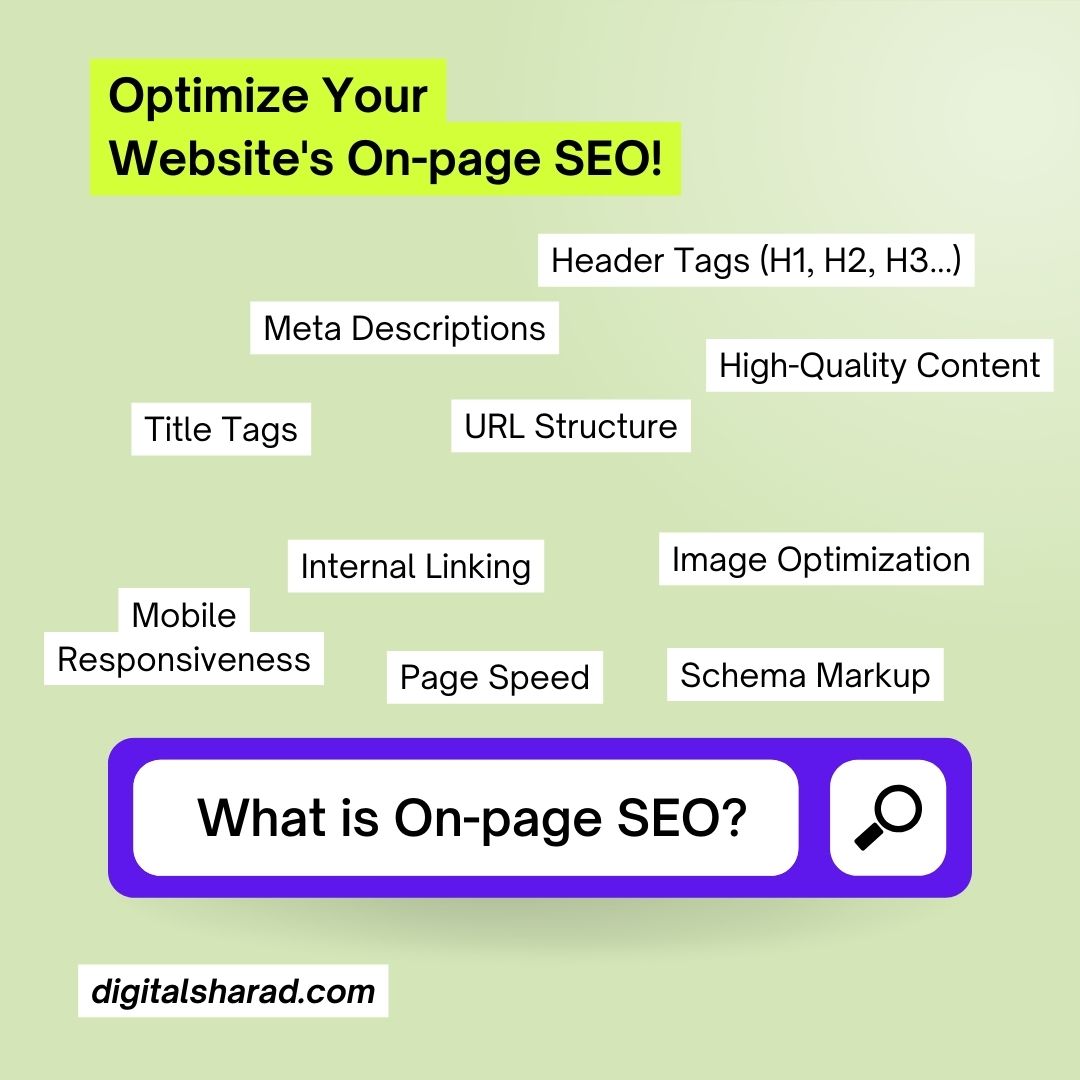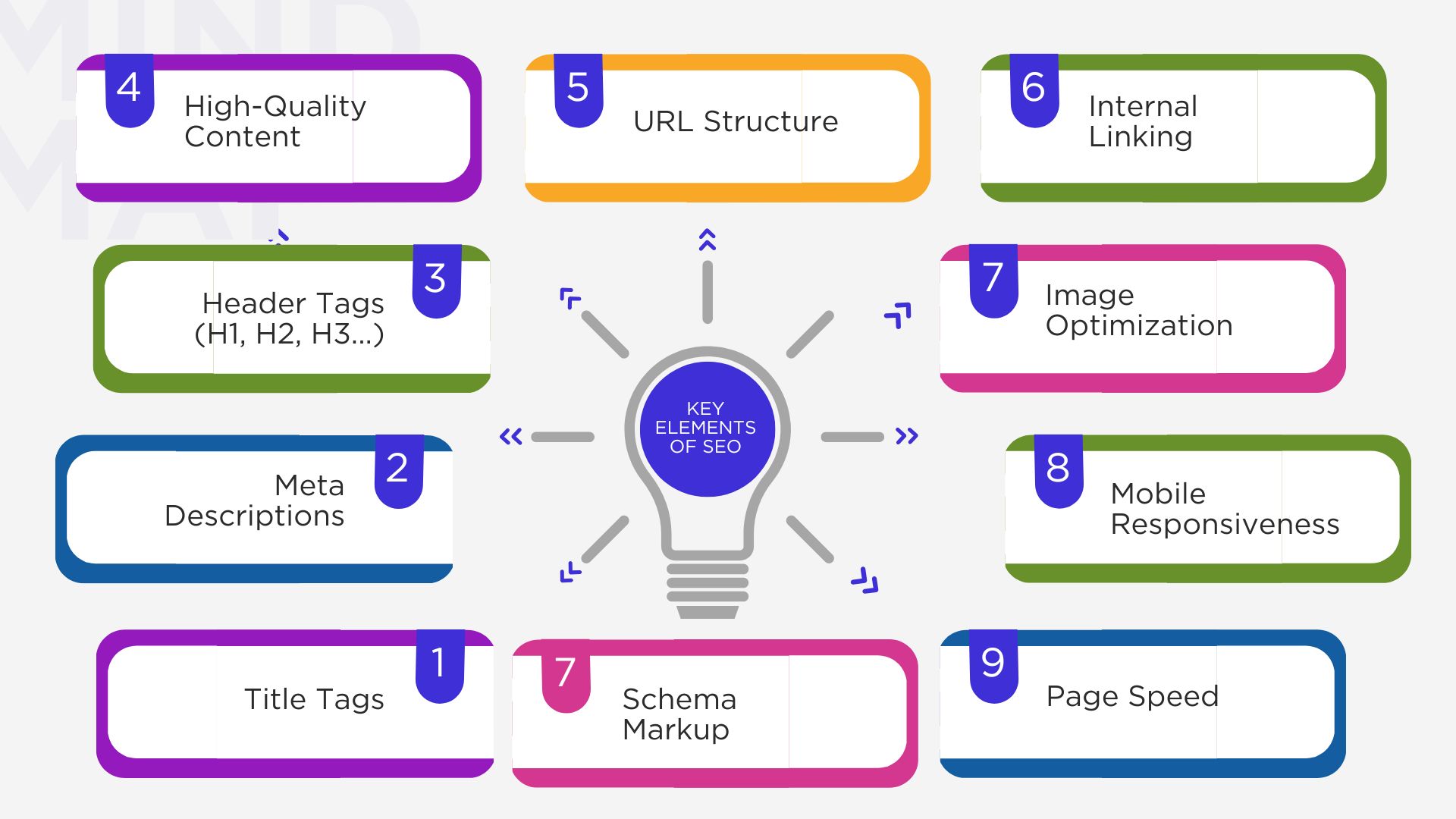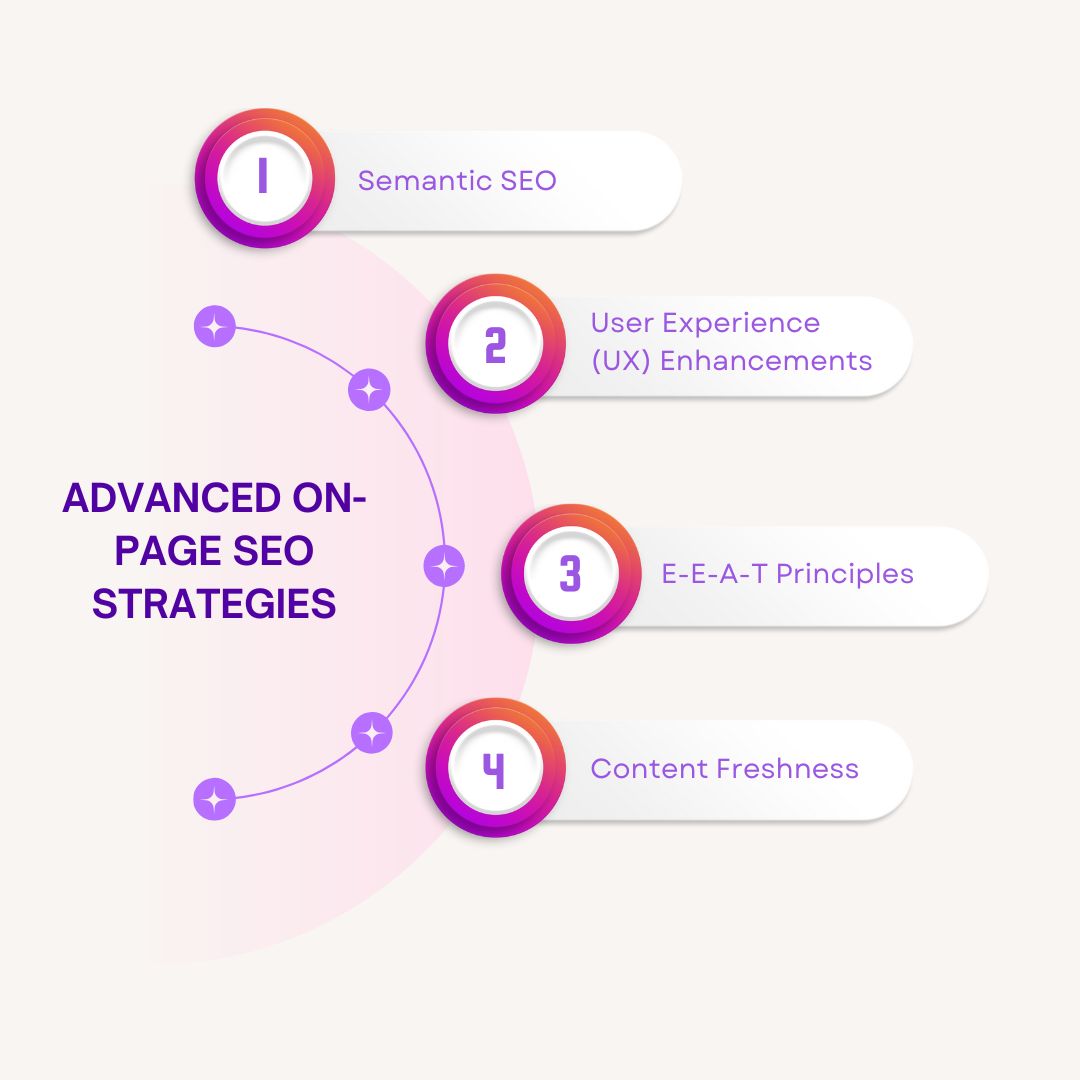Having a website alone isn’t enough to get noticed online. To attract visitors and improve visibility, your site needs to be optimized so that search engines like Google can easily understand your content. That’s where on-page SEO comes into play — a crucial area every SEO specialist focuses on to boost rankings and drive traffic.

Understanding On-Page SEO
On-page SEO refers to the practice of optimizing individual web pages to rank higher in search engine results and attract more relevant traffic. It involves tweaking various elements on your website—like content, titles, and images—to make them more appealing to both users and search engines.
Why Is On-Page SEO So Important in 2025?
On-page SEO is not just a technical task—it’s a foundation for your website’s success. Let’s explore why investing time and effort in on-site SEO matters more than ever today.
1. Helps Search Engines Understand Your Content
Search engines like Google don’t read your website like we humans do. Instead, they use algorithms to interpret your content. On-page SEO helps by organizing your page with clear titles, headings, and keywords. This way, search engines can quickly figure out what your page is about and rank it accordingly.
2. Boosts Your Website’s Visibility
The higher you rank on search engine results pages (SERPs), the more people will see your site. Optimized on-site SEO improves your chances of ranking on the first page where most clicks happen. Without it, your site may stay buried deep in search results, losing valuable traffic.
3. Drives Targeted Traffic
On-page SEO ensures that your website attracts visitors who are actually interested in what you offer. By optimizing for relevant keywords and creating helpful content, you connect with users actively searching for solutions you provide. This targeted traffic is more likely to convert into customers or subscribers.
4. Enhances User Experience
Good on-site SEO isn’t just about search engines—it’s about your visitors too. Elements like fast page speed, easy navigation, and mobile-friendly design make your site pleasant to use. When users enjoy their visit, they stay longer, explore more pages, and are more likely to return.
5. Reduces Bounce Rates
If visitors land on your site but don’t find what they need quickly, they leave—this is called a bounce. Optimizing your content with clear headings, relevant keywords, and engaging media helps visitors find answers fast, keeping them on your site longer.
6. Supports Voice and Mobile Search
With more people using smartphones and voice assistants like Siri or Alexa, your content needs to be optimized for these formats. On-page SEO includes making your site mobile-responsive and using natural language in your content, helping you capture this growing audience.
7. Builds Your Website’s Authority and Trust
Search engines reward websites that demonstrate expertise and trustworthiness. On-site SEO elements like citing credible sources, adding author bios, and using proper schema markup help build your site’s authority. It also ties into what an SEO professional does—ensuring your content meets best practices for credibility and performance.
8. Improves Conversion Rates
Effective on-page SEO guides users smoothly through your website toward your goals—whether signing up, buying a product, or contacting you. Clear calls-to-action, helpful content, and easy navigation make it easier for visitors to take those next steps.
9. Keeps You Competitive
Your competitors are optimizing their websites too. Neglecting on-page SEO means falling behind in search rankings and missing out on potential customers. Keeping your site optimized ensures you stay visible and competitive in your niche.
10. Supports Long-Term Growth
Unlike paid ads, the benefits of on-page SEO build over time. Well-optimized pages continue to attract organic traffic and improve rankings without ongoing ad spend. This makes on-page SEO a cost-effective strategy for sustained online growth.
Key Elements of On-Page SEO

Let’s break down the essential components you should focus on. Each of these plays a crucial role as an on-page SEO ranking factor that helps improve your visibility in search engines:
1. Title Tags
Your page title is the first thing users see in search results. Make it clear, concise, and include your main keyword. Aim for titles under 60 characters to ensure they display properly.
2. Meta Descriptions
This is the brief summary that appears below your title in search results. Write compelling descriptions that accurately reflect your content and encourage clicks. Keep them between 150-160 characters
3. Header Tags (H1, H2, H3…)
Use headers to organize your content. The H1 tag should be reserved for your main title, while H2 and H3 tags can structure subheadings. This not only aids readability but also helps search engines understand your content hierarchy.
4. High-Quality Content
Create content that provides value to your readers. Ensure it’s original, informative, and addresses the needs of your target audience. Incorporate relevant keywords naturally without overstuffing.
5. URL Structure
Keep your URLs short, descriptive, and include relevant keywords. Avoid using unnecessary numbers or characters. For example, use www.example.com/on-page-seo-guide instead of www.example.com/page?id=123.
6. Internal Linking
Link to other relevant pages within your website. This helps search engines crawl your site more effectively and keeps users engaged by providing additional resources.
7. Image Optimization
Use images to enhance your content, but ensure they’re optimized. Compress images for faster loading times and use descriptive file names and alt text to improve accessibility and SEO.
8. Mobile Responsiveness
With more users accessing websites via mobile devices, it’s crucial that your site is mobile-friendly. Ensure your design adapts to various screen sizes for a seamless user experience.
9. Page Speed
A fast-loading website improves user experience and can positively impact your search rankings. Use tools like Google PageSpeed Insights to identify and fix performance issues.
10. Schema Markup
Implementing schema markup helps search engines understand your content better, potentially leading to rich snippets in search results. Use appropriate schema types relevant to your content.
Advanced On-Page SEO Strategies

Semantic SEO
Beyond keyword optimization, semantic SEO focuses on the intent behind search queries. Incorporate related terms and topics to provide comprehensive answers, enhancing your content’s relevance.
User Experience (UX) Enhancements
A positive user experience leads to longer site visits and higher engagement. Ensure intuitive navigation, clear calls-to-action, and a clean design to keep users engaged.
E-E-A-T Principles
Demonstrate Experience, Expertise, Authoritativeness, and Trustworthiness in your content. Provide author bios, cite credible sources, and ensure content accuracy to build trust with both users and search engines.
Content Freshness
Regularly update your content to reflect the latest information and trends. Fresh content signals to search engines that your site is active and relevant.
On-Page SEO Tools & Resources
To streamline your on-page SEO efforts, consider using these tools:
- Google Search Console: Monitor your site’s performance and identify issues.
- Google PageSpeed Insights: Analyze and optimize your site’s speed.
- Yoast SEO: Optimize your content directly within WordPress.
- Semrush On Page SEO Checker: Receive actionable insights to improve your on site SEO.
Common On-Page SEO Mistakes to Avoid
- Keyword Stuffing: Overusing keywords can lead to penalties.
- Duplicate Content: Ensure each page has unique content.
- Neglecting Mobile Optimization: A non-responsive site can deter mobile users.
- Ignoring Meta Descriptions: Missing or generic meta descriptions can reduce click-through rates.
Conclusion
Mastering on-site SEO is vital for enhancing your website’s visibility and driving organic traffic in 2025. By focusing on content quality, user experience, and technical optimization, you can ensure your site meets the evolving standards of search engines and user expectations.
To dive deeper into specific elements that impact rankings, check out our On-Page SEO Ranking Factors guide.
FAQs About On-Page SEO
Q1: What are examples of on-page SEO?
Examples include optimizing title tags, meta descriptions, header tags, content, images, and internal links.
Q2: Is on-page SEO better than off-page SEO?
Both are essential. On-page SEO ensures your content is optimized for search engines, while off-page SEO builds your site’s authority through backlinks.
Q3: How often should I update on-page SEO?
Regularly review and update your content, especially when there are changes in your industry or search engine algorithms.
Q4: Does Google still care about keyword density?
While keyword usage is important, overemphasis on density can harm readability. Focus on natural incorporation of keywords.
Q5: What’s the easiest way to audit on-page SEO?
Utilize tools like Semrush’s On Page SEO Checker to identify and rectify on-page issues efficiently.


